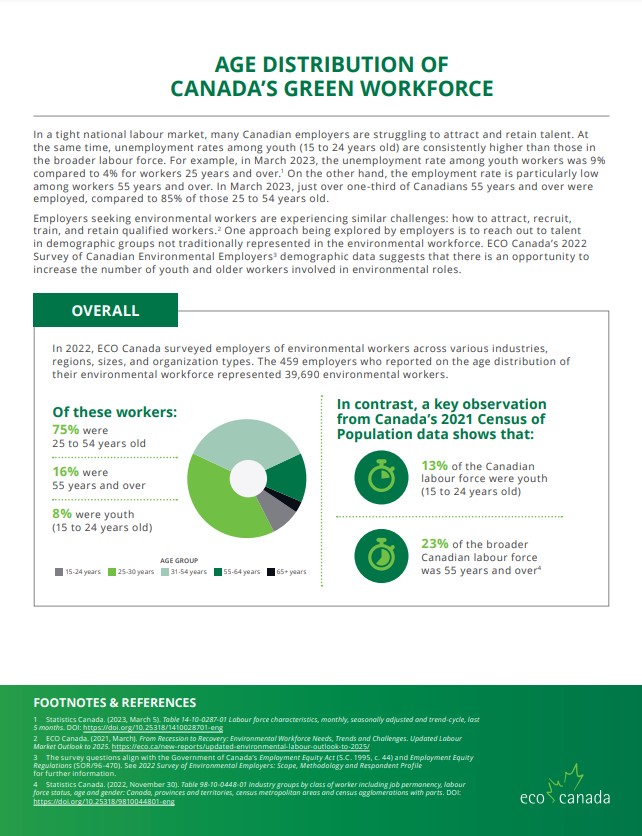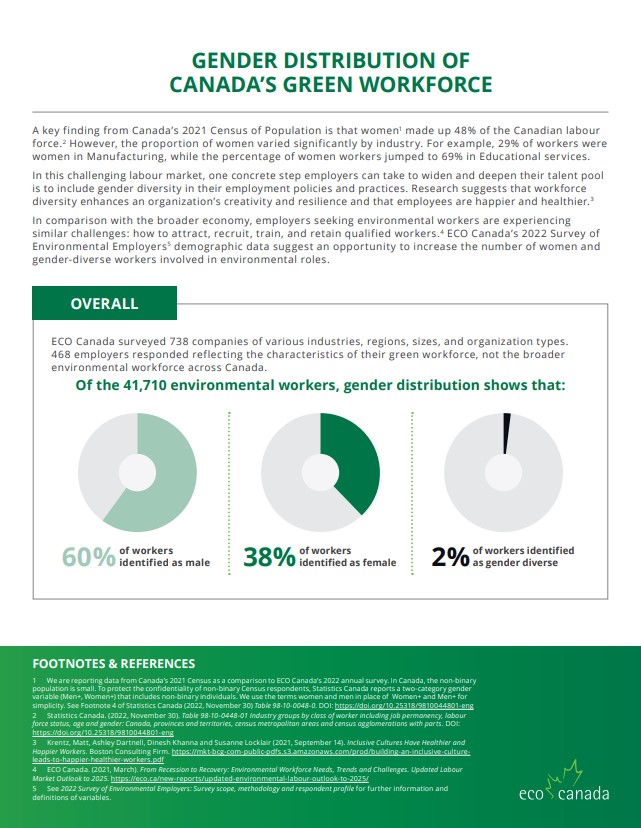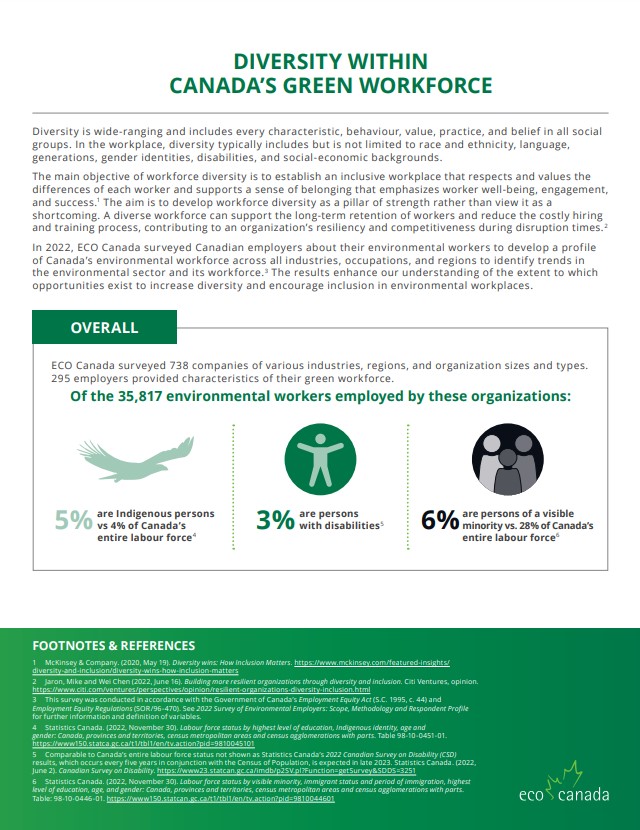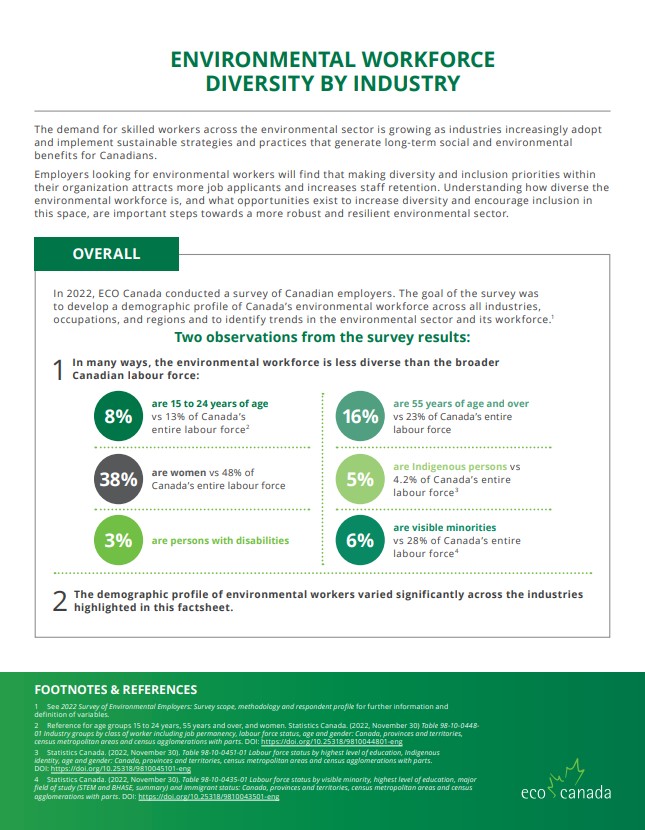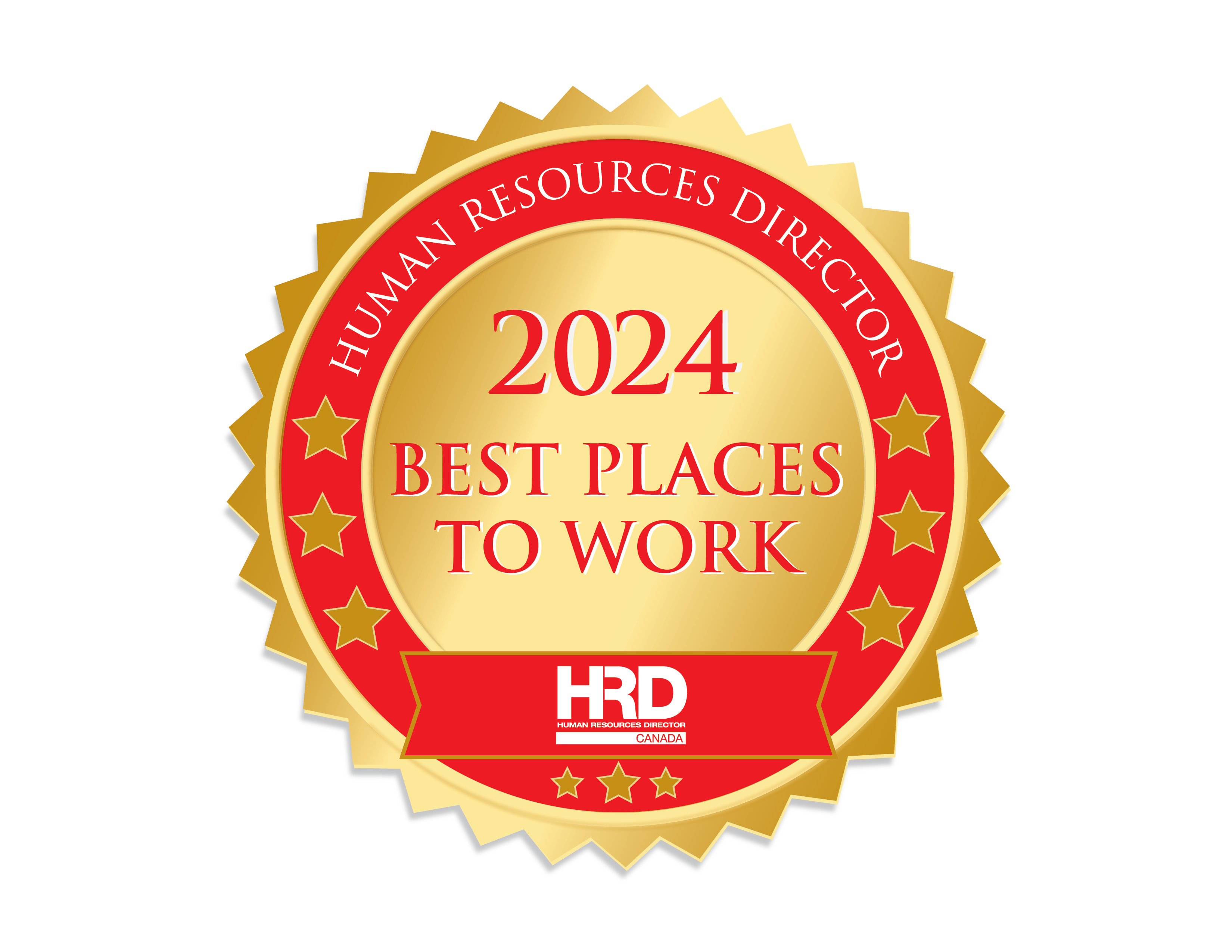Research
Workforce Diversity Series
Taking initial steps to attract a diverse environmental workforce and to support an equitable and inclusive workplace in Canada requires information about current workforce diversity across the environmental labour sector.
To this end, these fact sheets, based on ECO Canada’s national survey of Canadian employers in early 2022, provide a profile of environmental workforce diversity across Canada.
Environmental Workforce Diversity, 2022
ECO Canada’s labour market research report, Environmental Labour Demand Outlook to 2025, identified that a convergence of market, regulatory, social, and technological factors will influence the number and type of environmental workers needed today and in the future. It forecasts 172,700 net environmental job openings by 2025 due to sector growth and retirements.
In addition, our 2021 labour market research report, National Environmental Workforce Strategy Framework, identified twelve priority actions to address Canada’s environmental labour talent needs and gaps. The common factor connecting these twelve priorities: workforce diversity.
To learn about diversity in Canada’s green workforce, ECO Canada launched a national survey of Canadian employers in early 2022. The goal of this survey was to create a picture of Canada’s green workforce characteristics to enhance employers’ understanding of the extent to which opportunities exist to increase diversity and encourage inclusion in an environmental workplace.
From January to March 2022, 737 employers representing over 376,600 employees across Canada participated in our survey. Our survey questionnaire asked demographic questions about employers’ green workers, who comprised 12%, or 45,000 employees across all companies surveyed.
Environmental Workforce Diversity factsheets present findings and observations on:
- Age Distribution
- Gender Distribution
- Indigenous persons, persons of a visible minority, persons with disabilities
- By Industry
See Scope, Methodology and Respondent Profile to review our survey’s approach.
Age Distribution of Canada’s Environmental Workforce, 2022
ECO Canada’s 2021 labour market outlook, From Recession to Recovery: Environmental Workforce Needs, Trends and Challenges, indicates that employers seeking environmental workers are experiencing challenges: how to attract, recruit, train, and retain qualified workers. A solution is for employers to support a strategy for age diversity to help an organization reduce employee turnover and job shuffling and encourage long-term worker commitments.
In 2022, ECO Canada surveyed employers to collect demographic data on their environmental workers. The results of the survey suggest that organizations have an opportunity to develop an inter-generational workforce by engaging more youth and workers 55 years and over.
Download the Factsheet
Gender Distribution of Canada’s Environmental Workforce
At a time of national labour stortage and rising environmental job openings, one concrete step employers can take to widen and deepen their labour force pool is to include gender diversity in their employment policies and practices.
Boston Consulting Firm’s report, Inclusive Cultures Have Healthier and Happier Workers, suggests that workforce diversity enhances an organization’s creativity and resilience and that employees are happier and healthier.
Demographic data from ECO Canada’s national survey of Canadian employers in early 2022 suggest an opportunity to increase the number of women and gender-diverse workers involved in environmental roles.
Download the Factsheet
Diversity Within Canada’s Green Workforce, 2022
A workforce, people who perform the work, bring with them diversity, the uniqueness they possess.
Types of diversity are wide-ranging in all social groups. It includes every characteristic, behaviour, value, practice, and belief. Diversity in the workplace typically includes but is not limited to race and ethnicity, language, generations, gender identities, disabilities, and social-economic backgrounds
A diverse workforce can bring novel innovations and different perspectives, leading to creative solutions. As environmental job opportunities continue to rise in a tight labour market so is the demand for skilled talent. By implementing strategies to diversify their environmental workforce employers can overcome not only recruitment challenges for new employees but also retention of their current employees.
Download the Factsheet
Environmental Workforce Diversity by Industry, 2022
The fact sheets, part of ECO Canada’s Workforce Diversity Series, are an information tool for employers and employees to navigate the increasing demand for skilled workers throughout the environmental sector.
The Environmental Workforce Diversity by Industry fact sheet summarizes environmental workforce diversity results from ECO Canada’s 2022 survey of Canadian employers, highlighting industries that are top employers of environmental workers in Canada, including:
- Environmental consulting services
- Professional, scientific and technical services (excluding environmental consulting)
- Administrative and support, waste management and remediation services
- Educational services
- Manufacturing
- Natural resources
